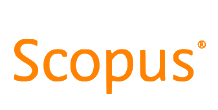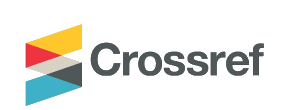Joining up the dots: Telling the story of skills. How can students in Higher Education be supported to better understand and articulate their employability?
DOI:
https://doi.org/10.21153/jtlge2019vol10no2art699Keywords:
experiential learning, practice architecture, enterprise education, metacognition, narratives of employability, skillsAbstract
Employability is a complex, contested concept which has tended to be considered in terms of a dominant discourse of skills. This article argues that employability needs to be thought of more holistically, as ongoing, life-long, situated learning, whilst acknowledging that the contested language of skills and the need to demonstrate competency through examples is embedded in employers’ recruitment processes. Therefore the ability to articulate what a graduate can offer to employers, framed in terms of skills and expressed in narratives which provide convincing examples, is important in establishing potential employability. Research shows that undergraduate and postgraduate students can find this problematic. In addition, recent scholarship calls for research to create a theoretically informed understanding of why and how interventions aimed at enhancing employability are effective. The authors have researched a diverse range of interventions which have had a positive impact and which are based on the principles of enterprise education and experiential learning. Their findings, based on qualitative and quantitative data collected from participants, suggest that experiential learning can be helpful in enabling students to more confidently articulate their employability by providing examples of skilful practices applied in context. It is unusual for undergraduate (UG) and post graduate (PG) student learning experiences to be considered within the same research project however, the correlation of results and outcomes provides valuable points of reflection. The interventions explored provide examples of ways in which a practice architecture based on experiential learning can support understanding, confidence, metacognition and the creation of narratives, enhancing students' capacity to ‘join up the dots’, and tell the story of their employability.
Metrics
References
Akkerman, S. F., & Bakker, A. (2011). Boundary crossing and boundary objects. Review of Educational Research, 81(2), 132–169. doi: 10.3102/0034654311404435
Akkerman, S. F., & Van Eijck, M. (2013). Re-theorising the student dialogically across and between boundaries of multiple communities. British Educational Research Journal, 39(1), 60–72. doi: 10.1080/01411926.2011.613454
Alpay, E., & Walsh, E. (2008). A skills perception inventory for evaluating postgraduate transferable skills development. Assessment and Evaluation in Higher Education, 33(6), 581–598. doi: 10.1080/02602930701772804
Angelo, T. A. (1993). A 'Teacher's Dozen': Fourteen general, research-based guidelines to inform college teaching and assessment and improve higher learning. Paper presented at the American Association for Higher Education.[retrieved 22 Apr 2004, verified 29 Jan 2005] http://www. princeton. edu/~ aiteachs/workshop/14. html.
Bandura, A. (1977). Self-efficacy: Toward a unifying theory of behavioral change. Psychological review, 84(2), 191–215.
Bandura, A. (1997). The exercise of control. New York: Freeman.
Bathmaker, A. M., Ingram, N., & Waller, R. (2013). Higher education, social class and the mobilisation of capitals: Recognising and playing the game. British Journal of Sociology of Education, 34(5-6), 723–743. doi: 10.1080/01425692.2013.816041
Becker, G. S. (1975). Human Capital. Chicago: University of Chicago Press.
Belluigi, D. Z. (2013). A proposed schema for the conditions of creativity in fine art studio practice. International Journal of Education & the Arts, 14(19), 1–23.
Biggs, J. B. (2011). Teaching for quality learning at university: What the student does: UK: McGraw-Hill Education.
Biggs, J. B., & Tang, C. S. (2011). Teaching for quality learning at university: UK: McGraw-Hill Education.
Boler, M. (1999). Feeling power: Emotions and education: Psychology Press.
Brown, P., Hesketh, A., & Williams, S. (2004). The mismanagement of talent: Employability and jobs in the knowledge economy: Oxford: Oxford University Press.
Bryant, R. A. (2005). But I have no skills. Chronicle of Higher Education.
Bryman, A. (2008). Social research methods (3rd ed.). Oxford: Oxford University Press.
Creswell, J. W. (2014). Research design: Qualitative, quantitative, and mixed methods approaches. (4th ed.). Thousand Oaks, California: SAGE Publications.
Eva-Sys. Eva-Sys Education Survey Automation Suite. Retrieved 24.07, 2017, from http://www.evasys.co.uk/start.html
French, S. (2015). The benefits and challenges of modular higher education curricula. Issues and Ideas Paper. Melbourne: Melbourne Centre for the Study of Higher Education.
Gibbs, G. (1988). Learning by doing: A guide to teaching and learning methods: Oxford Centre for Staff and Learning Development, Oxford Brookes University.
Hacker, D. J., Dunlosky, J., & Graesser, A. C. (1998). Metacognition in educational theory and practice. New York: Routledge.
Harvey, L. (2000). New realities: The relationship between higher education and employment. Tertiary Education & Management, 6(1), 3–17.
HEA. (2015). HEA UK Experience Survey. from https://www.heacademy.ac.uk/system/files/ukes_2015.pdf
Holmes, L. (2013). Competing perspectives on graduate employability: Possession, position or process? Studies in Higher Education, 38(4), 538–554.
Holmes, L. (2015). Becoming a graduate: The warranting of an emergent identity. Education+ Training, 57(2), 219–238.
Holmes, L. (2017). Graduate employability: Future directions and debate In M. Tomlinson & L. Holmes (Eds), Graduate employability in context: Theory, research and debate (pp. 359-369). London: Palgrave Macmillan.
Kemmis, S., & McTaggart, R. (1982). The action research planner (2nd edn).Victoria, Deakin University.
Knight, P., & Yorke, M. (2004). Learning, curriculum and employability in higher education: Psychology Press.
Lawler, S. (2002). Narrative in social research. In T. May (Ed.), Qualitative research in action, (pp. 242–258). London: Sage
Lawler, S. (2014). Identity: Sociological Perspectives: London: John Wiley & Sons.
Marzano, R. J. (1998). A theory-based meta-analysis of research on instruction. Colorado: Office of Educational Research and Improvement.
Mok, K. H., & Wu, A. M. (2016). Higher education, changing labour market and social mobility in the era of massification in China. Journal of Education and Work, 29(1), 77–97. doi: 10.1080/13639080.2015.1049028
Morley, L. (2007). The X factor: employability, elitism and equity in graduate recruitment. Twenty-First Century Society, 2(2), 191-207. doi: 10.1080/17450140701325782
Nolan, J. (2018). Narrating employability from English, (provisional title). Ongoing Doctoral Research Project. Newcastle University.
Polkinghorne, D. E. (1988). SUNY series in philosophy of the social sciences. Narrative knowing and the human sciences. Albany, NY, US: State University of New York Press.
QAA. (2018). Enterprise and entrepreneurship education: Guidance for UK higher education providers. Retrieved 31.01.18, from http://www.qaa.ac.uk/publications/information-and-guidance/publication/?PubID=3222#.WnHn2Pm6-Uk
Rae, D. (2007). Connecting enterprise and graduate employability: Challenges to the higher education culture and curriculum?, Education + Training, 49(8/9), 605–619
Reay, D. (1998). ’Always knowing’ and ‘never being sure’: Familial and institutional habituses and higher education choice. Journal of Education Policy, 13(4), 519–529. doi: 10.1080/0268093980130405
Reay, D. (2013). Social mobility, a panacea for austere times: Tales of emperors, frogs, and tadpoles. British Journal of Sociology of Education, 34(5-6), 660-677. doi: 10.1080/01425692.2013.816035
Reeves, J., Denicolo, P., Metcalfe, J., & Roberts, J. (2012). The vitae researcher development framework and researcher development statement: Methodology and validation report. Vitae, Cambridge, 4-10.
Rogers, C. E. (1969). Freedom to learn. Columbus, Ohio: Merrill Publishing Company.
Simon Fraser University. (2012). Retrieved 10.11.17, from https://www.sfu.ca/tlc/blog/Experiential-education-at-SFU-wide-but-not-deep.html
Tomlinson, M. (2007). Graduate employability and student attitudes and orientations to the labour market. Journal of Education and Work, 20(4), 285–304. doi: 10.1080/13639080701650164
Universities UK, & CBI. Future fit: Preparing graduates for the world of work. Retrieved 31.01.18, from http://www.universitiesuk.ac.uk/policy-and-analysis/reports/Pages/future-fit-preparing-graduates-for-the-world-of-work.aspx
Vyakarnam, S., & Hartman, N. (2011). Unlocking the enterpriser inside!: A book of why, what and how! : World Scientific.
Wenger, E. (1998). Communities of practice: Learning, meaning, and identity: UK:Cambridge University Press.
Yin, R. K. (2003). Case study research: Design and methods. SAGE Publications.
Yorke, M. (2006). Employability in higher education: what it is, what it is not. York: Higher Education Academy.











